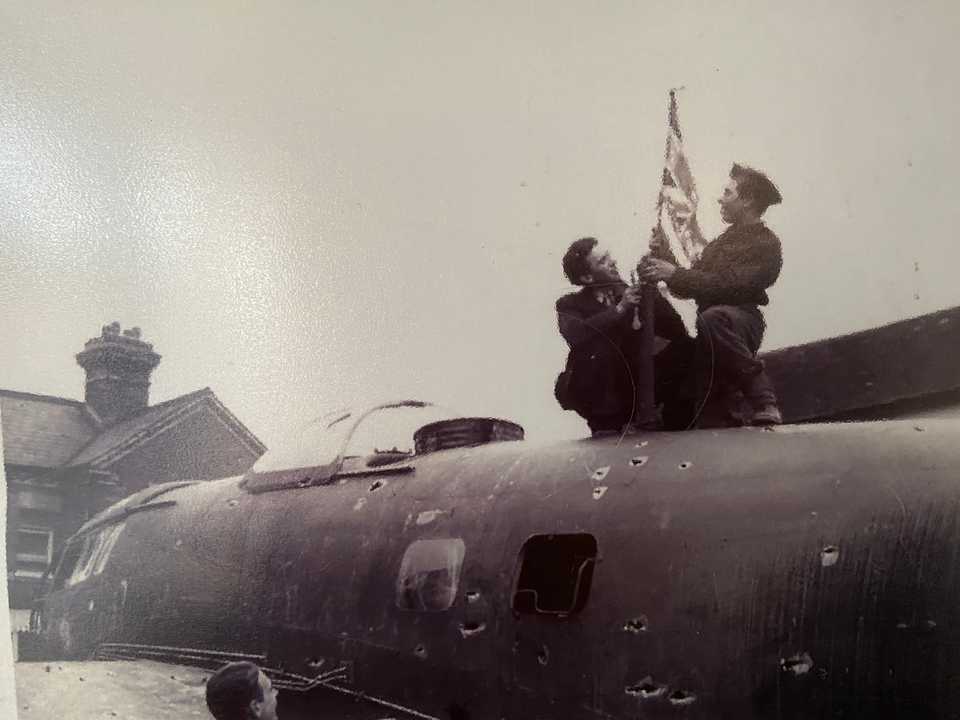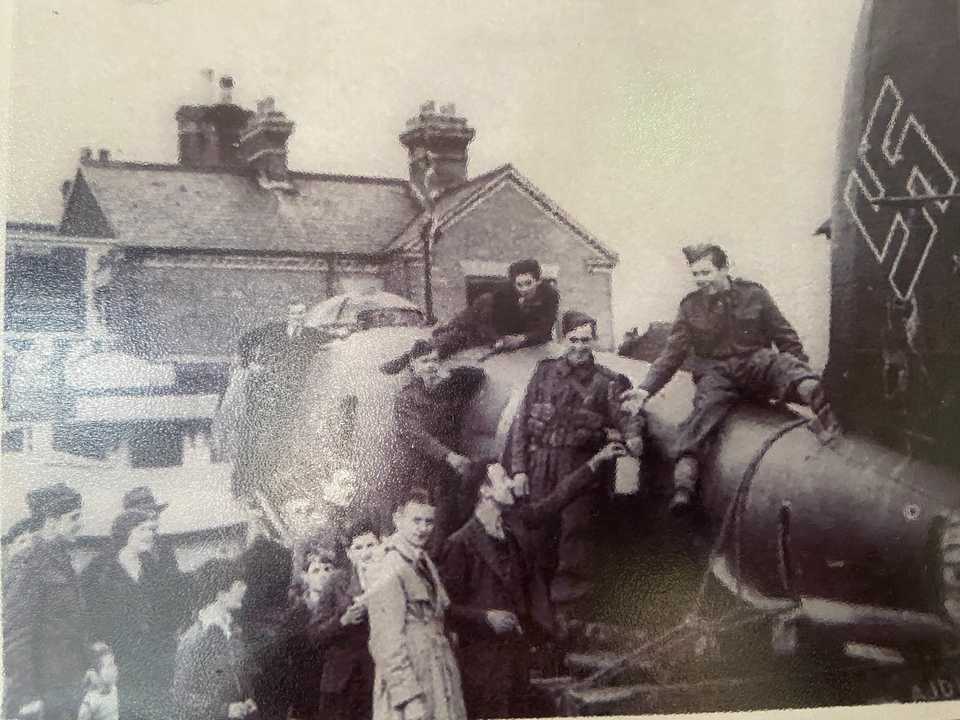Since 1510, The Half Moon has been a beacon of warmth and cheer in the heart of Hildenborough.Step in and discover a rich history woven into the very fabric of our pub.
Enjoy a pint, a delicious meal, and the company of friends, old and new. We're more than just a pub; we're a community hub, waiting to welcome you home.
Our History
This area is still being updatedOn 11th September, 1940, a Heinkel He111H-3 bomber (serial number 3233) attached to 3/KG1 (No.3 Squadron, Bomber Group 1) crash-landed in a field near Hildenborough. The aircraft survived largely intact, the wings were removed and it was taken away on a large flat-bed lorry trailer. However it was found to be too large for the narrow roads of the time and was parked for a while in the car park of the Half Moon public house in London Road, before the army could deal with it properly. The following is a collection of people's memories of that day, some photo's, and the facts on the aircraft and crew.
(Please note: A lot of confusion surrounds the circumstances of exactly who and what attacked the Heinkel. Some say Spitfires, some say Hurricanes, and various pilots laid claim to the damage at the time. Suffice to say, it was a busy time in the skies over Kent that day).
The following is an excerpt from a paper compiled by Morgen Witzel for the Leigh Historical Society:-
Wednesday 11 September, 1940 is one of the red letter days in Leigh wartime history. The ARP logbook gives the official account of what happened.
1510-1630 warning: Large enemy forces attacked London. Met by heavy fighting. Several planes seen coming down and 1 parachute. One German raider attacked by 3 Spitfires passed behind church and low down and across gardens and landed in Old Barn large field. Heavy bursts of gunfire as he passed church. 5 on board, 3 wounded. Plane neatly crashed up. Wardens, police and military on spot. Many planes reported down in district.
Two German bomber groups, 1 and 76, escorted by several hundred fighters, launched a raid on the London docks in the mid-afternoon. They got through and dropped their bombs, but as they were turning south, the bombers were pounced on by at least three squadrons of British fighters. The squadron diary of 1 RCAF Squadron tells how the interception was made.
12 Hurricanes of Number 1 Canadian Squadron left Northolt 1542 hours. The squadron led by Squadron Leader McNab in sections in line astern sighted a formation of about 20 Heinkel-111s northwest of Gatwick at 1615 hours. The enemy was about 300 feet below and proceeding south, and the attack was opened from the beam and moving to astern, breaking up the formation on the original attack, after which the combat developed into individual dogfights.
One Canadian pilot, Flying Officer Yuille, attacked a lone Heinkel-111 piloted by Corporal Steinecke of Bomber Group 1. According to his own after-action report, Yuille made a number of attacks on the Heinkel and seems to have worried it like a terrier with a rat, pursuing the bomber down and blazing away at it as it lost altitude. He was joined by two other Hurricanes, one of which was flown by Sergeant Scott of 229 Squadron.



